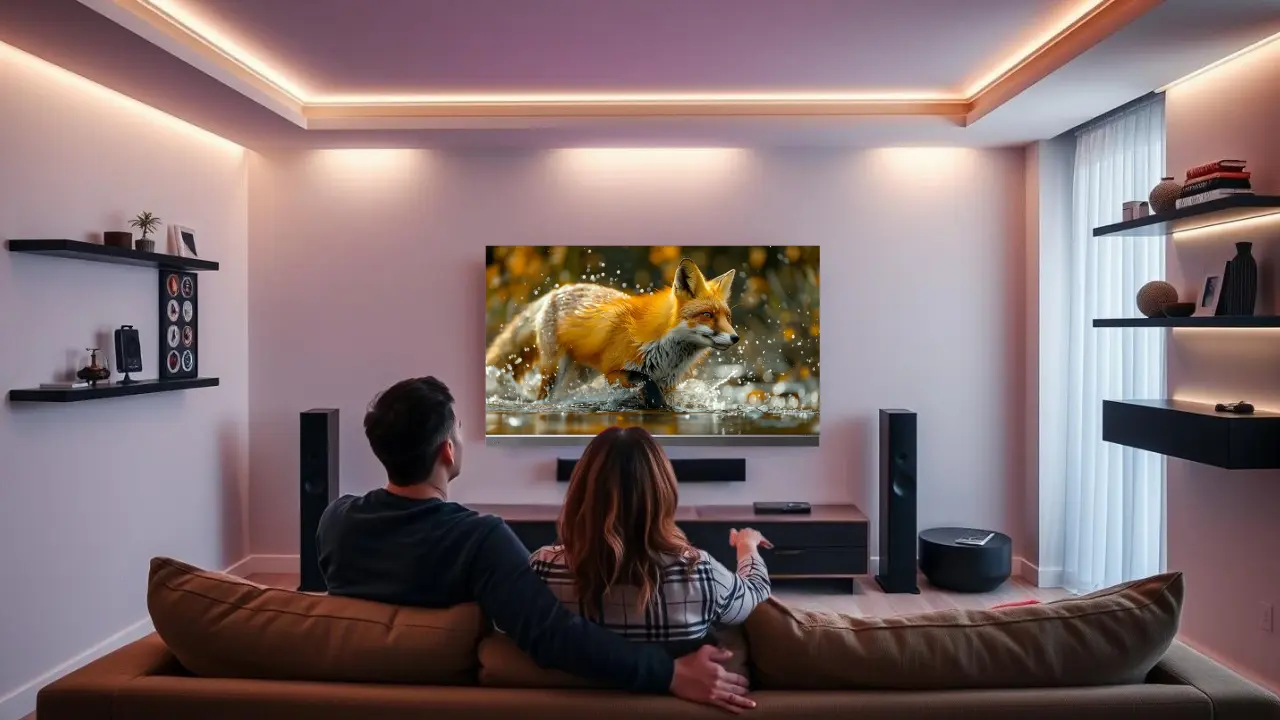Ever felt that pang of disappointment when your highly anticipated movie night is marred by a TV screen struggling with fast action or displaying unnatural colors? You’re not alone.
Fortunately, the evolution of television display technology has brought forth two compelling contenders: OLED and Mini LED.
Both promise exceptional picture quality, delivering everything from the deepest blacks to the brightest whites, aiming for a truly realistic viewing experience.
However, the magic behind their stunning visuals differs significantly. As you consider elevating your home entertainment setup, understanding these distinctions becomes crucial, especially when factoring in your individual viewing habits, whether you’re a casual streamer, a dedicated gamer, or a passionate film enthusiast.
So, what exactly makes OLED so captivating? What’s driving the buzz around Mini LED?
And ultimately, which technology deserves a place in your living room, especially when considering features like Dolby Vision IQ, MEMC, and immersive audio?
Let’s delve into the nuances of OLED versus Mini LED to illuminate which option best aligns with your quest for ultimate picture quality.
OLED (Organic Light Emitting Diode) Panels Are Self-Emissive
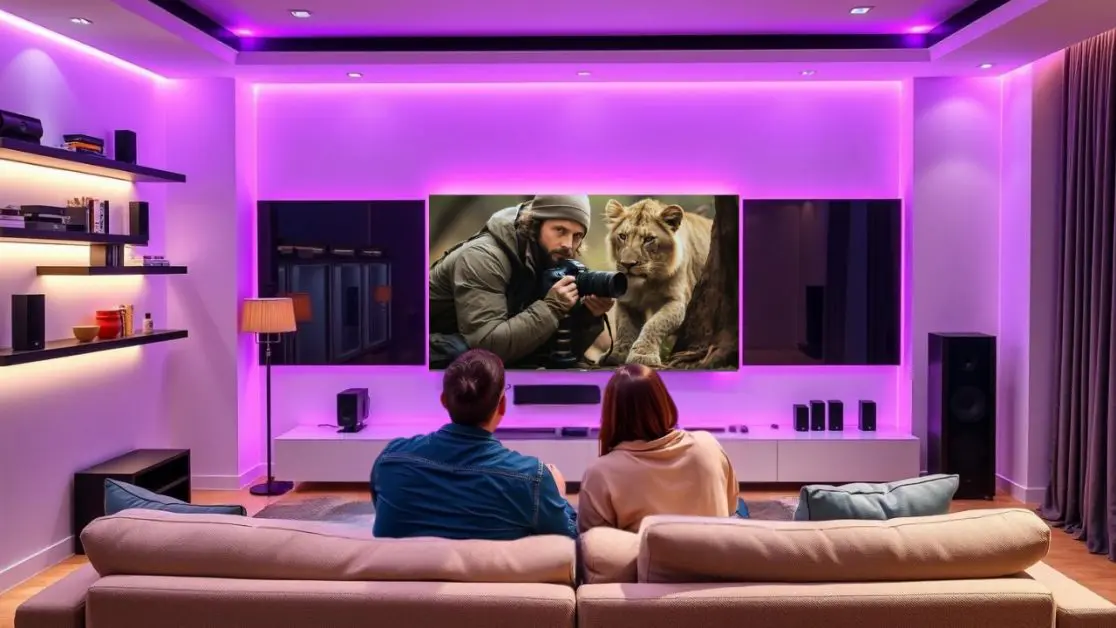
OLED panels are self-emissive, which means each pixel generates its own light. This enables true blacks owing to complete pixel shutdown, resulting in jaw-dropping contrast and color accuracy.
In contrast, Mini LED employs thousands of tiny LEDs for backlighting. While it doesn’t shut off individual pixels, it controls zones of light far better than older generation LED TVs. This provides brighter images as well as better contrast, especially in well-lit environments.
OLED: True Blacks and Perfect Contrast
One of the most celebrated features of OLED technology is its perfect blacks. Because pixels produce their own light, they can be turned off to achieve “ink” darkness beside bright highlights, something backlit displays can never achieve.
Rest assured, action-packed scenes will remain fluid and natural due to the OLED 120Hz refresh rate.
Dolby Vision IQ modifies visuals depending on the surrounding light so that content always appears balanced, regardless of whether it is day or night.
You can sit anywhere, and with a wide viewing angle, the screen’s angle does not need to be centered for the best view.
Mini LED Achieves Remarkable Brightness While Maintaining Great Contrast
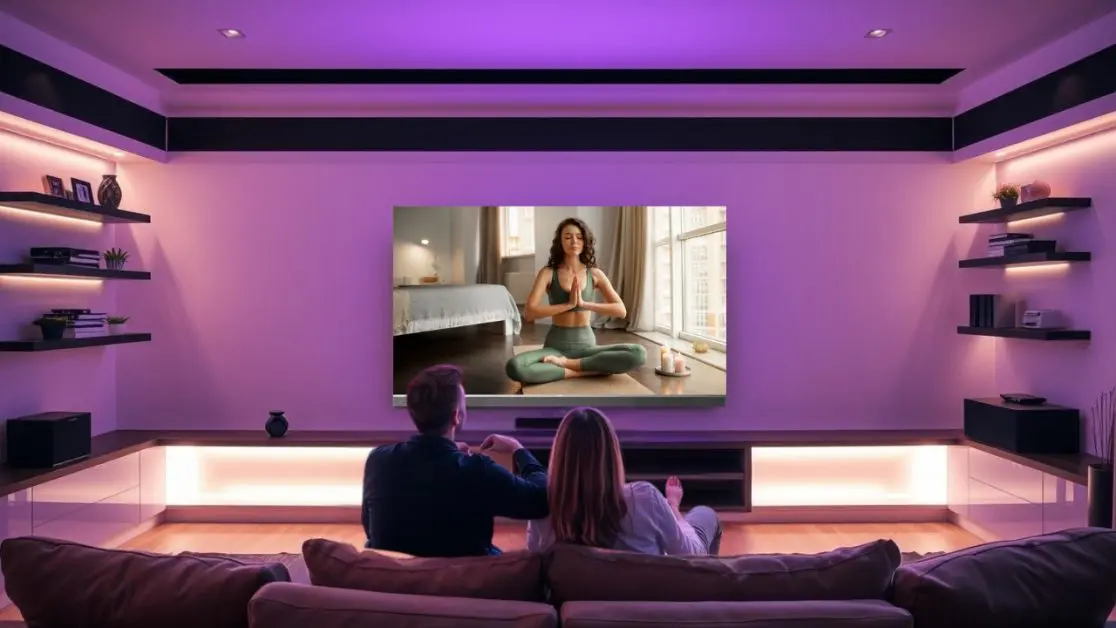
The specific attributes of Mini LED displays make them stronger when it comes to brightness and visual clarity, especially in well-lit areas.
Content with fast-paced action, like live sports or movies, runs smooth with little blurring when using MEMC & 144hz refresh rate.
This is also the case for Dolby Vision IQ, which prevents bright backgrounds from being lost in washed-out detail even when rooms are sunny.
Although not as deep as OLED, Mini LED does achieve great contrast from the side due to advanced control of light.
OLED vs Mini LED: General Comparison
| Feature | OLED TV | Mini LED TV |
| Display Technology | Self-emissive pixels (each pixel generates its own light) | Uses miniaturized LEDs for backlighting (backlit LCD) |
| Black Levels | Perfect blacks (pixels can completely turn off individually) | Deep blacks (zones of LEDs can turn off, but not individual pixels) |
| Brightness | Moderate to high (lower overall brightness compared to Mini LED) | Very high brightness (suitable for bright rooms) |
| Contrast Ratio | Infinite contrast (due to pixel-level control) | High contrast (local dimming helps improve contrast in bright areas) |
| Refresh Rate | Typically 120Hz with MEMC technology for smoother motion | Typically 120Hz or 144Hz with MEMC for smoother motion |
| Motion Handling | Excellent, with natural motion response and no motion blur | Great, but depends on the number of dimming zones and refresh rate |
| Viewing Angles | Wide viewing angles (no color shift or loss of contrast from sides) | Narrower viewing angles (contrast and color may degrade off-center) |
| Color Accuracy | Excellent (true-to-life colors due to individual pixel control) | Very good (depends on backlight zones and local dimming effectiveness) |
| Gaming Performance | Excellent for gaming with true blacks, vivid colors, and fast response | Excellent for gaming, especially in bright rooms, with fast refresh rates |
| Durability | Potential risk of burn-in (static images can leave permanent marks) | No risk of burn-in (since it uses backlight instead of self-emissive pixels) |
| Price | Generally more expensive due to the advanced technology | More affordable in comparison to OLED, especially for larger screens |
| Thickness | Thinner panels due to lack of a backlight system | Thicker panels due to backlight structure |
| Energy Efficiency | More energy-efficient in darker scenes (no need to power a backlight) | Less energy-efficient due to the need to power a large number of LEDs |
Motion Handling, Fast Scenes, Smooth Playback
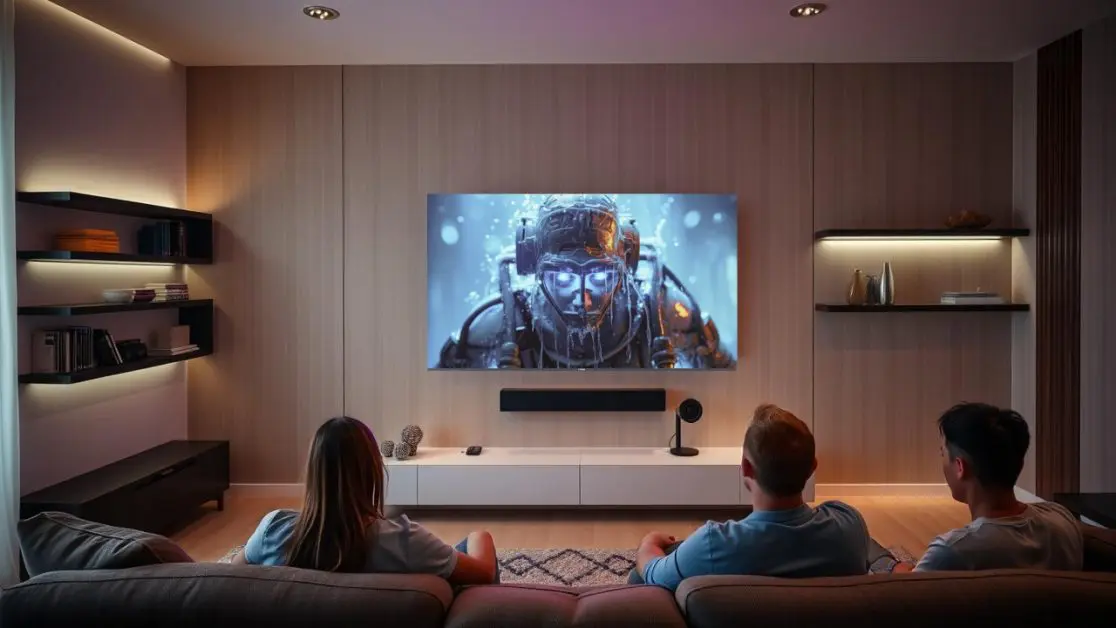
OLED provides the most natural response.
OLED panels outperform other displays in terms of motion management with a second 120Hz refresh rate and MEMC technology. Any and every action, from racing scenes to fast rotational camera moves, is seamless and feels natural.
Mini LED: A 144 hz refresh rate system brings additional advantages for responsiveness and sports and gamers alike.
This might be a golden opportunity for them because, in this scenario, everything is centered around action-packed gaming or sequences.
For best performance while gaming: response time, input lag, and game mode all make a difference.
Either of the models, OLED or Mini LED, comes with VRR (Variable Refresh Rate) and ALLM (Auto Low Latency Mode) to enhance the gaming experience by optimizing the television system.
In an open-world game, OLED provides immersive titles with complete vivid colors on blacks that look unreal.
Progress-heavy games highly benefit from Mini LED Game Mode with great visuals provided and fast lag time.
Surround Sound and Sharpness for Speakers
Both display types ensure top-tier features:
Purchasing these devices means not just buying for the visuals but also for the multi-functional entertainment systems.
Dolby spatial 3D elevated sound guarantees the feel of the center of Westfield Sydney, getting enveloped in the action
Clear highs and severe bass complement the powerful audio accompanying all movies and music sessions, elevating them to a new bound feeling of ultimate immersion.
Different content types—from dialogues to heavy bass tracks—have audio output finely tuned with modern innovation, literally enhancing TVs beyond the theatrical industry level.
Resulting in sound that literally flows through the room—not from the speakers—meaning top-tier performance, giving sweet dreams to audiovisual tech junkies branding these TVs as true masterpieces.
Smart Features: Safekeeping Meets Convenience
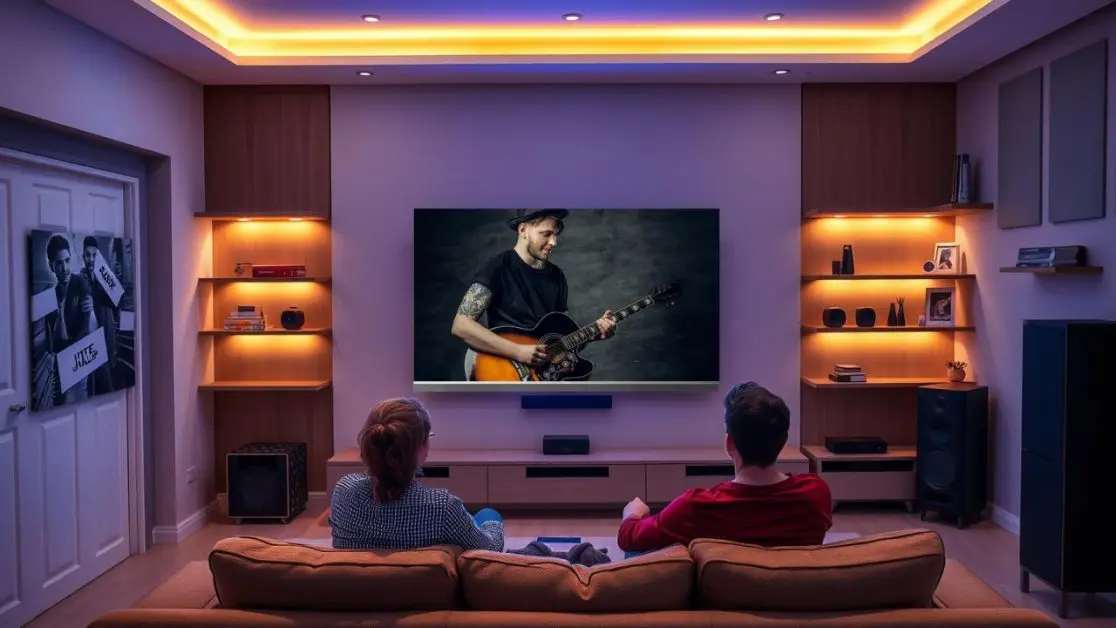
Smart functionality has become an instrumental part whether the TV has a modern panel or an older one.
Google TV: Custom Tailored and Personal
OLED and Mini LED both offer Google TV with:
- Curated suggestions of content to view based on consumption habits
- Direct access to apps, shows, and movies
- Liaison with streaming services and smart home devices
Hands-Free Voice Management
Smart AI-powered voice control enables users to change settings, search for content, or control compatible smart home devices without the use of a remote. No effort is required, and everything is done automatically.
Performance and Storage: Ensuring Seamless Operations
Both models are fitted with 3GB RAM and 32GB ROM, which provides:
- Fast and responsive interface
- Effortless app switching
- Ample space for content and files that need to be saved or downloaded
They can guarantee an uninterrupted experience even with several applications or processes running in the background.
Deciding What’s Appropriate: OLED or Mini LED?
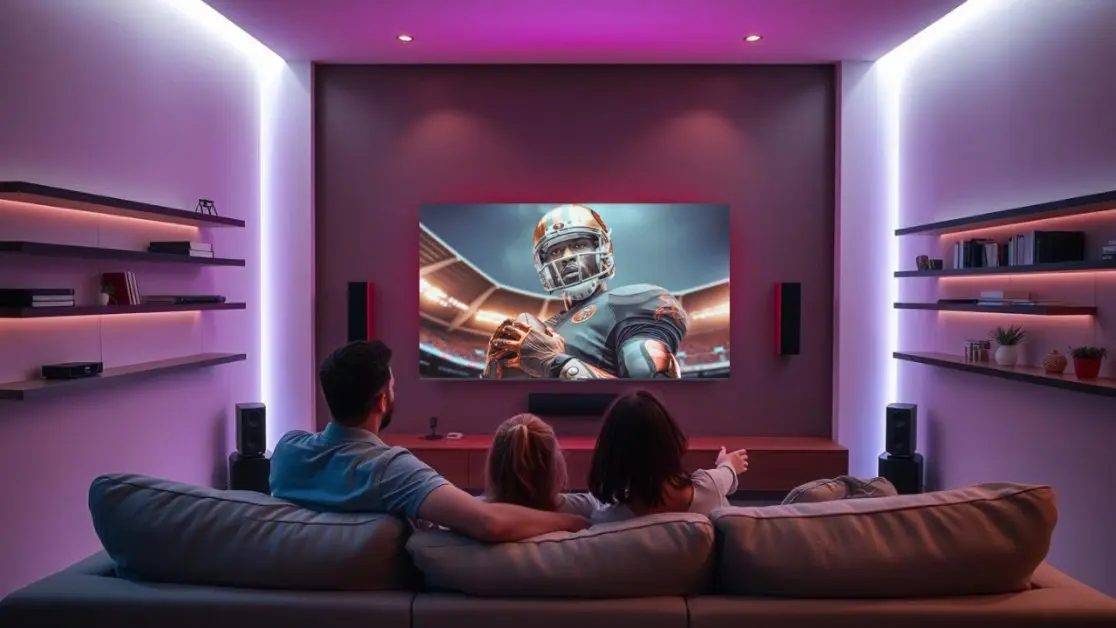
Where the choice drives personal preferences is individual strengths of each type and patterns of use alongside viewing conditions.
Select OLED if You Wish to Have:
- True blacks with perfect contrast and vivid color displays
- Ideal for dark arenas
- Movies and shows that are exceptionally fluid
- Wider viewing angles
Select Mini LED if You Prefer:
- Impeccable brightness on screens illuminated in daylight
- Ideal for action-packed video games
- Superb clarity even with bright lighting
- Screen responsiveness while watching packed content for action is slightly better
Final Thoughts
Both Mini LED and OLED TVs are revolutionized pieces of technology. These TVs will bring jaw-dropping visuals along with immersive audio and smart AI features that make unwinding in front of the TV feel otherworldly. There’s no bad option to go with—only the one that fits: Mini LED’s unparalleled brightness and motion clarity or the infinite contrast of OLED.
When dealing with top-of-the-line formats, the preference shifts the choice to priorities: do you want theatrical blacks or brightness that withstands the sun? No matter how you slice it, the approach is still much altered from before.
For the best experience and smarter features catered precisely to your liking, visit the Haier India Home Appliances site to check out the range of smart TVs equipped with OLED and Mini LED for an Indian who wants to go with advanced options.

